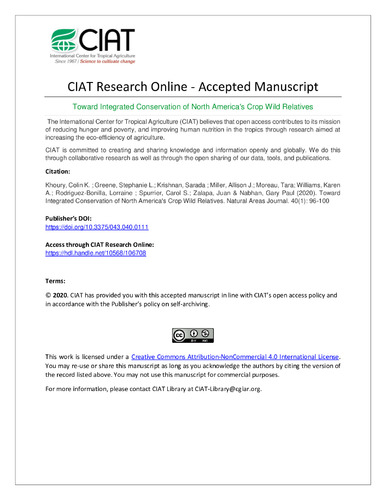Toward integrated conservation of North America's crop wild relatives
North America harbors a rich native flora of crop wild relatives—the progenitors and closely related species of domesticated plants—as well as a range of culturally significant wild utilized plants. Despite their current and potential future value, they are rarely prioritized for conservation efforts; thus many species are threatened in their natural habitats, and most are underrepresented in plant genebanks and botanical gardens. Further coordination of efforts among land management, botanical, and agricultural science organizations will improve conservation and general public awareness with regard to these species. We present examples of productive collaborations focused on wild cranberries (Vaccinium macrocarpon and Vaccinium oxycoccos) and chile peppers (Capsicum annuum var. glabriusculum). We then discuss five shared priorities for further action: (1) understand and document North America's crop wild relatives and wild utilized plants, (2) protect threatened species in their natural habitats, (3) collect and conserve ex situ the diversity of prioritized species, (4) make this diversity accessible and attractive for plant breeding, research, and education, and (5) raise public awareness of their value and the threats to their persistence.

